My
List |
Addition Date
|
Target
|
Mission
|
Instrument
|
Size
|

|
2024-10-11 |
Europa
|
Galileo
|
Near Infrared Mapping Spectrometer
|
1062x1062x3 |
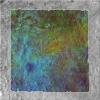
|
-
PIA26104:
-
Map of Water Signatures at Europa's Manannán Crater
Full Resolution:
TIFF
(3.385 MB)
JPEG
(289.1 kB)
|

|
2013-04-12 |
Europa
|
Galileo
|
Near Infrared Mapping Spectrometer
|
3000x1401x3 |
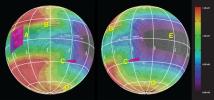
|
-
PIA16921:
-
Energy From Above Affecting Surface of Europa
Full Resolution:
TIFF
(12.61 MB)
JPEG
(479.9 kB)
|

|
2002-05-28 |
Io
|
Galileo
|
Near Infrared Mapping Spectrometer
|
974x509x3 |
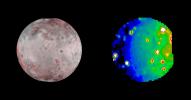
|
-
PIA03535:
-
Io in Infrared, Night and Day
Full Resolution:
TIFF
(312.2 kB)
JPEG
(36.39 kB)
|

|
2002-05-28 |
Io
|
Galileo
|
Near Infrared Mapping Spectrometer
|
816x600x3 |
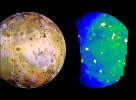
|
-
PIA03534:
-
Io in Infrared with Giant Plume's New Hot Spot
Full Resolution:
TIFF
(623.6 kB)
JPEG
(59.13 kB)
|

|
2002-05-28 |
Io
|
Galileo
|
Near Infrared Mapping Spectrometer
|
720x480x3 |
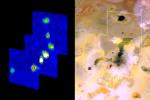
|
-
PIA03533:
-
Amirani Lava Flow on Io
Full Resolution:
TIFF
(606.9 kB)
JPEG
(34.96 kB)
|

|
2001-12-10 |
Io
|
Galileo
|
Near Infrared Mapping Spectrometer
|
740x340x3 |

|
-
PIA03601:
-
Io's Tupan Caldera in Infrared
Full Resolution:
TIFF
(501.9 kB)
JPEG
(36.29 kB)
|

|
2001-12-10 |
Io
|
Galileo
|
Near Infrared Mapping Spectrometer
|
540x360x3 |
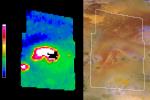
|
-
PIA03602:
-
A New Hot Spot on Northern Io
Full Resolution:
TIFF
(301.3 kB)
JPEG
(25.83 kB)
|

|
2001-11-27 |
Io
|
Galileo
|
Near Infrared Mapping Spectrometer
|
595x415x3 |
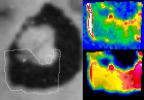
|
-
PIA02595:
-
Io's Loki in Infrared: Hot Edge
Full Resolution:
TIFF
(94.45 kB)
JPEG
(34.11 kB)
|

|
2001-11-27 |
Io
|
Galileo
|
Near Infrared Mapping Spectrometer
|
468x620x3 |

|
-
PIA02594:
-
Io's Tvashtar Area in Infrared: Multiple Lava Flows
Full Resolution:
TIFF
(441.1 kB)
JPEG
(31.68 kB)
|

|
2001-10-04 |
Io
|
Galileo
|
Near Infrared Mapping Spectrometer
|
1152x576x3 |
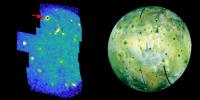
|
-
PIA02591:
-
Hot Spots on Io
Full Resolution:
TIFF
(806.2 kB)
JPEG
(73.93 kB)
|

|
2000-10-26 |
Jupiter
|
Galileo
|
Near Infrared Mapping Spectrometer
|
2769x1542x3 |
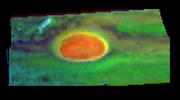
|
-
PIA02569:
-
Ammonia Ice near Jupiter's Great Red Spot
Full Resolution:
TIFF
(7.819 MB)
JPEG
(148.5 kB)
|

|
2000-07-10 |
Europa
|
Galileo
|
Near Infrared Mapping Spectrometer
|
950x650x3 |
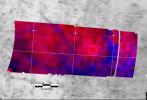
|
-
PIA02561:
-
Europa Impact Crater
Full Resolution:
TIFF
(904.6 kB)
JPEG
(55.73 kB)
|

|
2000-05-31 |
Io
|
Galileo
|
Near Infrared Mapping Spectrometer
|
1130x550x3 |
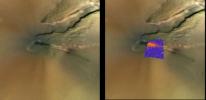
|
-
PIA02560:
-
Temperature Map of Pele, Io
Full Resolution:
TIFF
(1.376 MB)
JPEG
(57.62 kB)
|

|
2000-05-31 |
Io
|
Galileo
|
Near Infrared Mapping Spectrometer
|
850x410x1 |
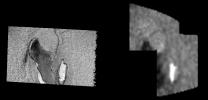
|
-
PIA02559:
-
Sulphur Dioxide on the Chaac Region of Io
Full Resolution:
TIFF
(145.7 kB)
JPEG
(35.13 kB)
|

|
2000-05-31 |
Io
|
Galileo
|
Near Infrared Mapping Spectrometer
|
890x376x3 |
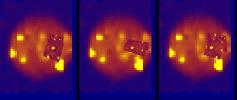
|
-
PIA02558:
-
Myriad of Hot Spots on Io
Full Resolution:
TIFF
(56.56 kB)
JPEG
(27.49 kB)
|

|
2000-05-18 |
Io
|
Galileo
|
Near Infrared Mapping Spectrometer
|
1060x767x3 |
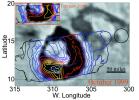
|
-
PIA02549:
-
Temperature Comparison at Loki
Full Resolution:
TIFF
(291.5 kB)
JPEG
(133.3 kB)
|

|
2000-05-18 |
Io
|
Galileo
|
Near Infrared Mapping Spectrometer
|
661x556x3 |
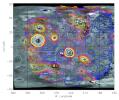
|
-
PIA02548:
-
Temperature Map of Io's Night Side
Full Resolution:
TIFF
(924.6 kB)
JPEG
(82.66 kB)
|

|
2000-05-18 |
Io
|
Galileo
|
Near Infrared Mapping Spectrometer
|
504x604x3 |

|
-
PIA02544:
-
Culann Patera/NIMS
Full Resolution:
TIFF
(478.6 kB)
JPEG
(16.82 kB)
|

|
2000-05-18 |
Io
|
Galileo
|
Near Infrared Mapping Spectrometer
|
2000x2028x3 |

|
-
PIA02543:
-
Prometheus Silicates/Sulfur dioxide/NIMS
Full Resolution:
TIFF
(4.722 MB)
JPEG
(347.4 kB)
|

|
2000-05-18 |
Io
|
Galileo
|
Near Infrared Mapping Spectrometer
|
1192x784x3 |
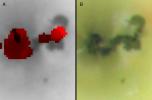
|
-
PIA02542:
-
Prometheus/NIMS
Full Resolution:
TIFF
(1.242 MB)
JPEG
(29.71 kB)
|

|
2000-05-18 |
Io
|
Galileo
|
Near Infrared Mapping Spectrometer
|
1000x1200x3 |

|
-
PIA02541:
-
Loki Patera/NIMS
Full Resolution:
TIFF
(639.3 kB)
JPEG
(78.9 kB)
|

|
2000-04-19 |
Europa
|
Galileo
|
Near Infrared Mapping Spectrometer
|
700x600x3 |
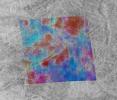
|
-
PIA02529:
-
Europa: Sea Salts or Battery Acid
Full Resolution:
TIFF
(976.3 kB)
JPEG
(64.07 kB)
|

|
1999-12-17 |
Io
|
Galileo
|
Near Infrared Mapping Spectrometer
|
800x400x3 |
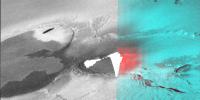
|
-
PIA02521:
-
Eruption from High Latitude Caldera Viewed by the Near-Infrared Mapping Spectrometer (NIMS)
Full Resolution:
TIFF
(482.4 kB)
JPEG
(46.98 kB)
|

|
1999-11-19 |
Io
|
Galileo
|
Near Infrared Mapping Spectrometer
|
841x631x3 |
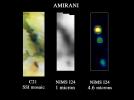
|
-
PIA02516:
-
Galileo NIMS Observes Amirani
Full Resolution:
TIFF
(274.2 kB)
JPEG
(34.6 kB)
|

|
1999-11-19 |
Io
|
Galileo
|
Near Infrared Mapping Spectrometer
|
1157x841x3 |
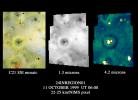
|
-
PIA02515:
-
Io's Prometheus Regions as Viewed by Galileo NIMS
Full Resolution:
TIFF
(870 kB)
JPEG
(76.75 kB)
|

|
1999-11-19 |
Io
|
Galileo
|
Near Infrared Mapping Spectrometer
|
1157x1241x3 |

|
-
PIA02514:
-
Loki as viewed by Galileo NIMS
Full Resolution:
TIFF
(638.9 kB)
JPEG
(92.45 kB)
|

|
1999-11-04 |
Io
|
Galileo
|
Near Infrared Mapping Spectrometer
|
959x581x3 |
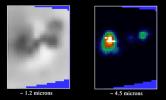
|
-
PIA02509:
-
Galileo's Near-Infrared Mapping Spectrometer Detects Active Lava Flows at Prometheus Volcano, Io
Full Resolution:
TIFF
(67.96 kB)
JPEG
(35 kB)
|

|
1999-09-30 |
Europa
|
Galileo
|
Near Infrared Mapping Spectrometer
|
837x796x3 |
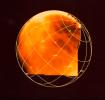
|
-
PIA02500:
-
Sulfuric Acid on Europa
Full Resolution:
TIFF
(1.208 MB)
JPEG
(55.43 kB)
|

|
1998-06-17 |
Europa
|
Galileo
|
Near Infrared Mapping Spectrometer
|
820x470x1 |
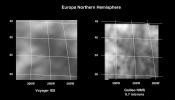
|
-
PIA00840:
-
Infrared Observations of Europa's Trailing Side
Full Resolution:
TIFF
(94.4 kB)
JPEG
(29.74 kB)
|

|
1998-03-26 |
Io
|
Galileo
|
Near Infrared Mapping Spectrometer
|
1525x1100x1 |
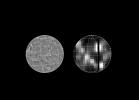
|
-
PIA00835:
-
NIMS Observation of Hotspots on Io
Full Resolution:
TIFF
(178 kB)
JPEG
(74.71 kB)
|

|
1998-03-26 |
Europa
|
Galileo
|
Near Infrared Mapping Spectrometer
|
1279x676x3 |
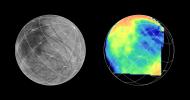
|
-
PIA00834:
-
NIMS G1 Observation of Europa
Full Resolution:
TIFF
(537.6 kB)
JPEG
(80.6 kB)
|

|
1998-03-26 |
Io
|
Galileo
|
Near Infrared Mapping Spectrometer
|
1225x935x3 |
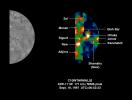
|
-
PIA01226:
-
Two New Hot Spots on Io
Full Resolution:
TIFF
(307.3 kB)
JPEG
(67.14 kB)
|

|
1998-03-26 |
Jupiter
|
Galileo
|
Near Infrared Mapping Spectrometer
|
712x725x3 |

|
-
PIA01224:
-
NIMS Observes the Structure and Composition of Jupiter's Clouds
Full Resolution:
TIFF
(33.81 kB)
JPEG
(75.03 kB)
|

|
1998-03-26 |
Io
|
Galileo
|
Near Infrared Mapping Spectrometer
|
2200x1700x3 |
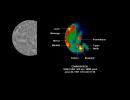
|
-
PIA00899:
-
New Hot Spot on Io Discovered by NIMS During Orbit C9
Full Resolution:
TIFF
(783.9 kB)
JPEG
(130.5 kB)
|

|
1998-03-26 |
Ganymede
|
Galileo
|
Near Infrared Mapping Spectrometer
|
445x525x1 |

|
-
PIA00878:
-
NIMS Observes Melkart Crater on Ganymede
Full Resolution:
TIFF
(21.67 kB)
JPEG
(17.45 kB)
|

|
1998-03-26 |
Io
|
Galileo
|
Near Infrared Mapping Spectrometer
|
1017x635x3 |
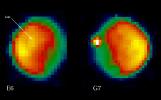
|
-
PIA00856:
-
NIMS Observes Increased Activity at Loki Patera, Io
Full Resolution:
TIFF
(912.3 kB)
JPEG
(40.86 kB)
|

|
1998-03-26 |
Europa
|
Galileo
|
Near Infrared Mapping Spectrometer
|
1326x863x3 |
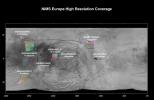
|
-
PIA00855:
-
High Spatial Resolution Europa Coverage by the Galileo Near Infrared Mapping Spectrometer (NIMS)
Full Resolution:
TIFF
(869.3 kB)
JPEG
(98.64 kB)
|

|
1998-03-26 |
Ganymede
|
Galileo
|
Near Infrared Mapping Spectrometer
|
1588x762x3 |
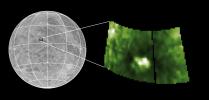
|
-
PIA00854:
-
Antum Crater
Full Resolution:
TIFF
(1.075 MB)
JPEG
(96.9 kB)
|

|
1998-03-26 |
Jupiter
|
Galileo
|
Near Infrared Mapping Spectrometer
|
1000x800x3 |
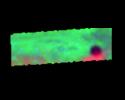
|
-
PIA00847:
-
NIMS Observes Europa's Shadow
Full Resolution:
TIFF
(636.5 kB)
JPEG
(25.2 kB)
|

|
1998-03-26 |
Jupiter
|
Galileo
|
Near Infrared Mapping Spectrometer
|
1000x800x3 |
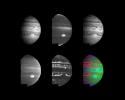
|
-
PIA00582:
-
Jupiter's Multi-level Clouds
Full Resolution:
TIFF
(415.2 kB)
JPEG
(39.65 kB)
|

|
1998-03-26 |
Europa
|
Galileo
|
Near Infrared Mapping Spectrometer
|
1650x1950x1 |

|
-
PIA00846:
-
NIMS E4 Observations of Europa Trailing Hemisphere
Full Resolution:
TIFF
(661 kB)
JPEG
(122.3 kB)
|

|
1998-03-26 |
Io
|
Galileo
|
Near Infrared Mapping Spectrometer
|
1600x1300x3 |
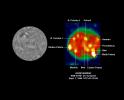
|
-
PIA00845:
-
NIMS: hotspots on Io during G2 (continued)
Full Resolution:
TIFF
(632.6 kB)
JPEG
(108.9 kB)
|

|
1998-03-26 |
Ganymede
|
Galileo
|
Near Infrared Mapping Spectrometer
|
1143x635x3 |
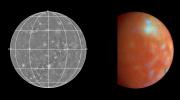
|
-
PIA00844:
-
NIMS Callisto Global Mosaic
Full Resolution:
TIFF
(934.2 kB)
JPEG
(63.81 kB)
|

|
1998-03-26 |
Jupiter
|
Galileo
|
Near Infrared Mapping Spectrometer
|
900x800x3 |
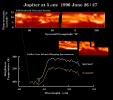
|
-
PIA00842:
-
Observations of Jupiter's thermal emission made by the Infrared Telescope Facility and the Galileo NIMS instrument
Full Resolution:
TIFF
(100.3 kB)
JPEG
(72.46 kB)
|

|
1998-03-26 |
Io
|
Galileo
|
Near Infrared Mapping Spectrometer
|
1300x850x3 |
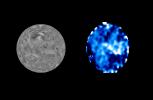
|
-
PIA00841:
-
Distribution of Sulfur Dioxide Frost on Io
Full Resolution:
TIFF
(173.2 kB)
JPEG
(60.06 kB)
|

|
1998-03-26 |
Io
|
Galileo
|
Near Infrared Mapping Spectrometer
|
1900x1300x3 |
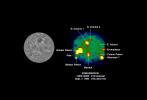
|
-
PIA00520:
-
NIMS: hotspots on Io during G2
Full Resolution:
TIFF
(541 kB)
JPEG
(103.4 kB)
|

|
1998-03-26 |
Callisto
|
Galileo
|
Near Infrared Mapping Spectrometer
|
1065x863x3 |
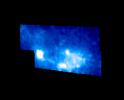
|
-
PIA00839:
-
Callisto Asgard Region as Viewed by NIMS
Full Resolution:
TIFF
(61.68 kB)
JPEG
(36.83 kB)
|

|
1998-03-26 |
Jupiter
|
Galileo
|
Near Infrared Mapping Spectrometer
|
1300x900x3 |
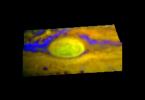
|
-
PIA00838:
-
First Near Infrared Mapping Spectrometer (NIMS) Image of the Great Red Spot
Full Resolution:
TIFF
(1.043 MB)
JPEG
(38.36 kB)
|

|
1998-03-26 |
Io
|
Galileo
|
Near Infrared Mapping Spectrometer
|
1525x1100x3 |
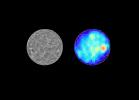
|
-
PIA00836:
-
Hotspots on Io During the Ganymede 2 Encounter
Full Resolution:
TIFF
(460.5 kB)
JPEG
(86.37 kB)
|

|
1998-03-26 |
Ganymede
|
Galileo
|
Near Infrared Mapping Spectrometer
|
1950x1500x3 |
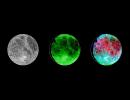
|
-
PIA00500:
-
NIMS Ganymede Surface Map
Full Resolution:
TIFF
(1.156 MB)
JPEG
(170.1 kB)
|

|
1998-03-26 |
Europa
|
Galileo
|
Near Infrared Mapping Spectrometer
|
1000x800x1 |
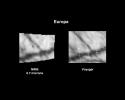
|
-
PIA00853:
-
Europa 6th Orbit NIMS Data
Full Resolution:
TIFF
(103 kB)
JPEG
(28.36 kB)
|

|
1998-03-26 |
Jupiter
|
Galileo
|
Near Infrared Mapping Spectrometer
|
700x900x1 |

|
-
PIA00848:
-
NIMS Views of a Jovian "Hot Spot"
Full Resolution:
TIFF
(106.1 kB)
JPEG
(19.02 kB)
|

|
1998-03-26 |
Jupiter
|
Galileo
|
Near Infrared Mapping Spectrometer
|
233x506x3 |

|
-
PIA00501:
-
NIMS Spectral Maps of Jupiter's Great Red Spot
Full Resolution:
TIFF
(261.8 kB)
JPEG
(14.41 kB)
|

|
1997-11-17 |
Callisto
|
Galileo
|
Near Infrared Mapping Spectrometer
|
1800x1700x3 |
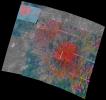
|
-
PIA01079:
-
Callisto's Southern Hemisphere as Viewed by NIMS & SSI
Full Resolution:
TIFF
(5.516 MB)
JPEG
(418.8 kB)
|

|
1997-11-17 |
Callisto
|
Galileo
|
Near Infrared Mapping Spectrometer
|
900x850x3 |
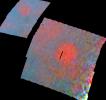
|
-
PIA01078:
-
Callisto's Southern Hemisphere
Full Resolution:
TIFF
(807.7 kB)
JPEG
(96.79 kB)
|

|
1996-02-08 |
Moon
|
Galileo
|
Near Infrared Mapping Spectrometer
|
2364x2364x3 |
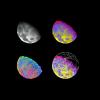
|
-
PIA00231:
-
Moon As Seen By NIMS
Full Resolution:
TIFF
(3.323 MB)
JPEG
(222.8 kB)
|

|
1996-02-08 |
Earth
|
Galileo
|
Near Infrared Mapping Spectrometer
|
460x328x3 |
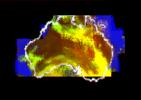
|
-
PIA00227:
-
Australia Viewed by NIMS
Full Resolution:
TIFF
(196.9 kB)
JPEG
(15.16 kB)
|

|
1996-02-08 |
Venus
|
Galileo
|
Near Infrared Mapping Spectrometer
|
810x500x1 |
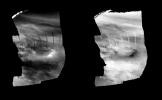
|
-
PIA00222:
-
Venus - Lower-level Nightside Clouds As Seen By NIMS
Full Resolution:
TIFF
(159.5 kB)
JPEG
(25.82 kB)
|

|
1996-02-08 |
Venus
|
Galileo
|
Near Infrared Mapping Spectrometer
|
600x310x1 |
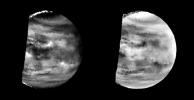
|
-
PIA00221:
-
Venus - Lower-level Clouds As Seen By NIMS
Full Resolution:
TIFF
(81.58 kB)
JPEG
(15.78 kB)
|

|
1996-01-29 |
Venus
|
Galileo
|
Near Infrared Mapping Spectrometer
|
1001x1000x3 |
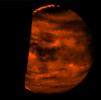
|
-
PIA00124:
-
Infrared Image of Low Clouds on Venus
Full Resolution:
TIFF
(391.4 kB)
JPEG
(42.72 kB)
|

|
1996-01-29 |
Venus
|
Galileo
|
Near Infrared Mapping Spectrometer
|
1000x1000x3 |
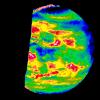
|
-
PIA00112:
-
Venus Nightside through the Near Infrared Mapping Spectrometer
Full Resolution:
TIFF
(140.5 kB)
JPEG
(111.1 kB)
|

 Planetary Data System
Planetary Data System








































































